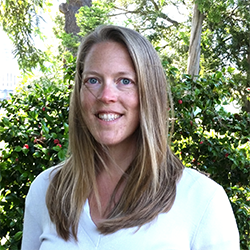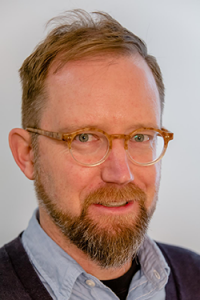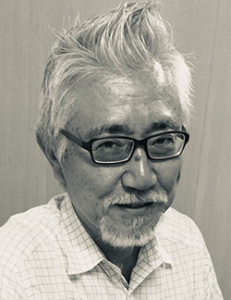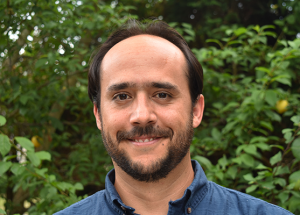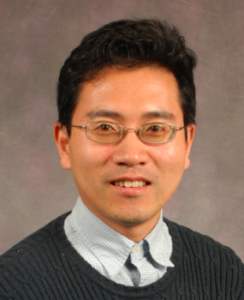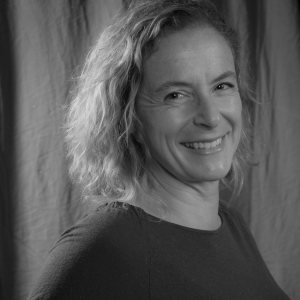SSA announces the 2020 election to select four new members to serve three-year terms on the Board of Directors. The seven candidates and their statements are presented below, in alphabetical order by last name; in order by last name, these candidates are Annemarie Baltay, Susan Bilek, Matthew Gerstenberger, Hiroshi Kawase, Diego Melgar, Zhigang Peng and Katherine (Kate) Scharer. The election will open in October and will close at 5 p.m. (Pacific) on Friday, 3 January 2020.
Only members who have renewed their membership for 2020 are eligible to vote.
Candidate Statements
Research Geophysicist, U.S. Geological Survey
Principal Fields: observational earthquake seismology, earthquake ground motion, earthquake source physics, seismic hazard
The Seismological Society of America is the leading organization bringing together earthquake scientists and engineers, both focused on modeling earthquake processes and seismic hazard, in order to mitigate earthquake risk. It is exactly these connections, between scientists and engineers, that are unique to the Society and that the SSA nurtures. My professional growth has been strongly influenced by the exposure to these different approaches through the SSA. There are still many advancements to be made at the intersection of earthquake science and engineering, and I hope to further encourage these collaborations through meeting design and SSAs scientific goals, in order to work together in furthering our ability to model earthquake processes and phenomenon for the betterment of society. The SSA is also a leader in advocating for and encouraging early-career scientists through opportunities to present along side scientific veterans at the annual meetings, early-career mentorship programs, and scientific recognition through annual awards and student presentation awards. My first scientific talk as a student was at the 2008 SSA Meeting in Santa Fe, and I was immediately welcomed in and introduced to some of the great seismological minds; I was floored that these researchers were taking the time to talk to me as a graduate student. I would continue to strengthen SSAs early-career program to ensure the next generation of earthquake scientists is as excited and engaged in the Society’s mission as I am. Along with early-career encouragement, I would like to see the SSA supporting its young families. I have enjoyed bringing my young sons to recent annual meetings, but have found it challenging at times to fully experience the meeting with kids in tow. If elected, I would advocate for family-friendly meeting accommodations that ensure balance between full participation as an SSA member and family responsibilities. I would be honored to serve the SSA on the Board of Directors as the Society continues to be a leading, welcoming and supportive scientific society.
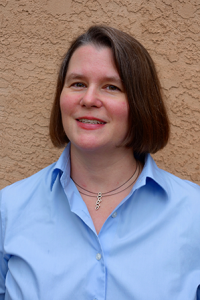
Professor of Geophysics, New Mexico Tech
Principal fields: earthquake source physics, subduction zone processes, tectonophysics, environmental seismology
The SSA provides an excellent organizational foundation for our study of earthquakes and for translating gained knowledge to inform seismic hazard public policy. The SSA meetings and publications encourage important connections between academic, government, industry, national lab seismologists, engineers, and policy makers. For me, the annual SSA meeting stands out as providing an open and supportive gathering that encourages a range of valuable networking opportunities spanning different career-levels, allows for respectful debate about scientific and policy ideas, and provides inspiration for new research directions. But as the seismology field continues to expand into various atmospheric, surface, and planetary disciplines, this expansion provides both exciting opportunities and challenges for the society. We have an opportunity to diversify our community gatherings and journal contributions with these new ideas and scientists, while remaining true to the mission of the SSA. I would be honored to help serve our community to address these challenges and ensure that the annual meetings and journals remain the premier, and widely accessible, seismological gathering places of ideas. My leadership experience within IRIS and subduction zone science communities involves engagement with a range of different communities, a valuable SSA Board perspective as the seismological community broadens and grows.
Principal Seismologist, Hazards and Risk Management Programme Leader, National Seismic Hazard Model Leader, GNS Science, New Zealand
Principal fields: earthquake hazard and risk assessment, earthquake statistics, earthquake forecasting, earthquake response
As a researcher based overseas, the Seismological Society of America has been hugely influential on my own research and career. Researchers in the SSA community bring together some of the most exciting science that runs the gamut from fundamental to very applied science. It is an honor to be nominated to run for the SSA Board of Directors. The last decade in New Zealand has been a very busy one for earthquakes; my involvement in the response to broad aspects of these earthquakes (from science to engineering and emergency management), and my role in leading the Hazards and Risk research program has stressed to me the importance and the impact of the work done by the seismological community. If elected, I would work to continue the support of the Society’s critical role in coordinating and promoting the many needs that ultimately aim towards improved disaster risk reduction. The Society has an important function in encouraging fundamental science and how we take that through to applied science; this includes enhancing our interaction with other communities such as those focused on engineering, social science and science communication. Essential is the Society’s influence and encouragement of students and young and upcoming researchers, and also the Society’s ability to bring together what is ultimately a small global community of researchers to best learn from each other to develop and promote our science. I feel the Society is already successful in these contributions and it is important that we continue to prioritize and adapt our role, and annual meeting, to best serve both the scientific community and society.
Program-Specific Professor of Disaster Prevention Research Institute, Kyoto University, Japan
Principal field: Strong motion seismology, with a special emphasis on source and site effects in the near field, for engineering applications
It is a great honor for me to be nominated to the Board of Directors of the Seismological Society of America. I have been serving the Society as an associate editor of BSSA since 1996 for what has been a quite rewarding experience from the start. Consequently, I expect my service with the Society to be even more exciting if I were to become a member of the Board. As described on the At Work web page, I started my career as a structural engineer. However, after having worked with Kei Aki from 1986 to 1988, I strongly gravitated toward being more of a seismologist than a structural engineer. Since then, I have been acting as a kind of “bridge” between these two professional communities. Despite the well-known necessity of collaboration, I know how difficult it is to cross the boundary between two fields. The same is true for international collaborations, also recognized as being indispensable. From my personal experience, I found that the key to success is in exercising the empathetic power of humans on both sides of such an imagined boundary. Therefore, as a potential member of the Board, I see my role as encouraging activities within the Society that will bring together groups of working professionals from different fields, as well as those of diverse generations, genders, and regions.
Assistant Professor, University of Oregon
Principal fields: Earthquake sources, tsunami hazards, GNSS geodesy, early warning systems
The SSA has been a fundamental part of all the stages of my career. And so, I am happy to be considered to serve in the board of directors, to give back to this vibrant community which has provided me so much. SSA is a premier scientific society and through its journals and meetings it facilitates discovery. As a board member I will work to make sure that this task, that the society already does exceedingly well, continues to grow and modernize. There are other challenges that need work and attention. Issues of equity and inclusion should be at the forefront of our discussions. We’ve made great strides in the Earth sciences in general in this regard. The recent adoption of a code of conduct for the annual meeting is a great first step. I have been enthused to see how far we have come with gender diversity – in particular at the early career levels – during the annual meetings. We should continue to foster trends like this one. However, seismology has failed to be inclusive of other traditionally underrepresented minorities. Much work is needed here to make sure that we reach out as widely as possible to facilitate minorities’ access to our discipline. For example, by integrating SSA’s meetings and publications with other minority organizations in the Americas. Similarly, seismology is a crossroads for science, technology, engineering, and policy. At a time when science and knowledge are systematically devalued, I believe the SSA has a role to play. Our society should continue to have a strong presence in government at all levels. The recent reauthorization of the National Earthquake Hazards Reduction Program (NEHRP), the approval of the National Volcano Warning System (NVEWS), and the continued growth of the ShakeAlert earthquake early warning project are recent examples of this intersection between government and science where SSA should continue to have a strong advocacy presence. Our society serves us and facilitates our science, but it also serves our communities. I am honored to be considered to serve on the board of directors and to further its mission.
Professor of Geophysics, Georgia Institute of Technology
Principal fields: earthquake detection, subduction zone processes, intraplate and induced earthquakes, deep and slow earthquakes, machine learning, education and outreach
My connection with the Seismological Society of America (SSA) is throughout my student life as well as my professional career. Ever since I joined the first SSA annual meeting in San Diego in 2000, it has always been one of the most enjoyable conferences to attend every year. I have served multiple roles in SSA recently, including the Charles Richter Award committee, the associate editor of the Bulletin of Seismological Society of America (BSSA), and more recently the editor-in-chief of the Seismological Research Letters (SRL). In my view, SSA is the world’s leading society on advancing seismology and earthquake sciences, as well as informing public and policy decisions with sound science. SSA’s strength lies in its attractive annual meetings, its well-respected peer-review journals (BSSA and SRL), its government relations and international representations. The challenges facing this society currently include peer-reviewed publications impacted by competing open access journals, international collaborations affected by geopolitical tensions, and traditional communication outpaced by near-instantaneous social media. If elected, I would like to contribute to further strengthening the reputations and impacts of both journals, and ensure that the annual meetings and topical workshops attract a diverse range of related disciplines and international participants. In addition, I would like to help better communicate intriguing science results directed towards the public, industries and policy makers.
Research Geologist, Earthquake Science Center, U.S. Geological Survey
Principal fields: paleoseismology, geologic slip rates on active faults
Several of the core values outlined in the SSA Strategic Plan provide inspiring motivations to be involved in this organization: scientific integrity and excellence, international cooperation, and informing policy decisions with sound science. The SSA Strategic Plan was written in the aftermath of the 2009 L’Aquila earthquake, in a period when media and government were pressing the knowledge and communication skills of the earthquake science community. As many have recognized, the growth of megacities and commensurate concentration of infrastructure in regions with active faults means that our scientific and communication skills will be challenged again in future earthquakes, underscoring the unique value of SSA, both as a voice for earthquake hazards and also as a scientific publishing house. Serving on the Board since 2017, I have been able to see firsthand the efficacy of the SSA organization, and opening any volume of BSSA or SRL shows the wide range of excellent science conducted by the international membership. For these reasons, it is my honor to be considered for the SSA Board. If elected, I welcome your input on the direction and scope of the SSA organization and will work to communicate your science toward broader application and earthquake resiliency.
Voting in our election is a benefit of membership with the Seismological Society of America. Join or renew your SSA membership today!

